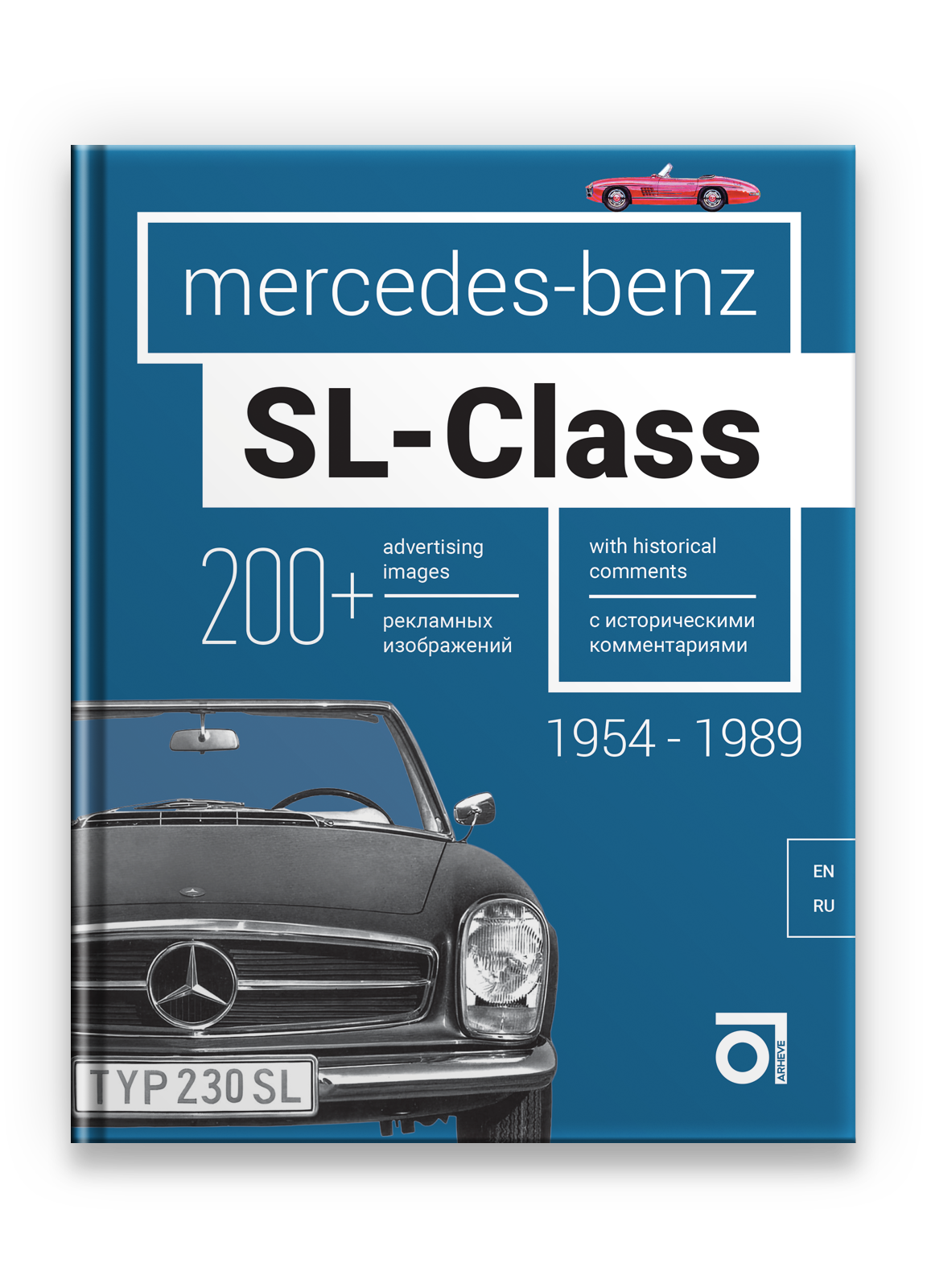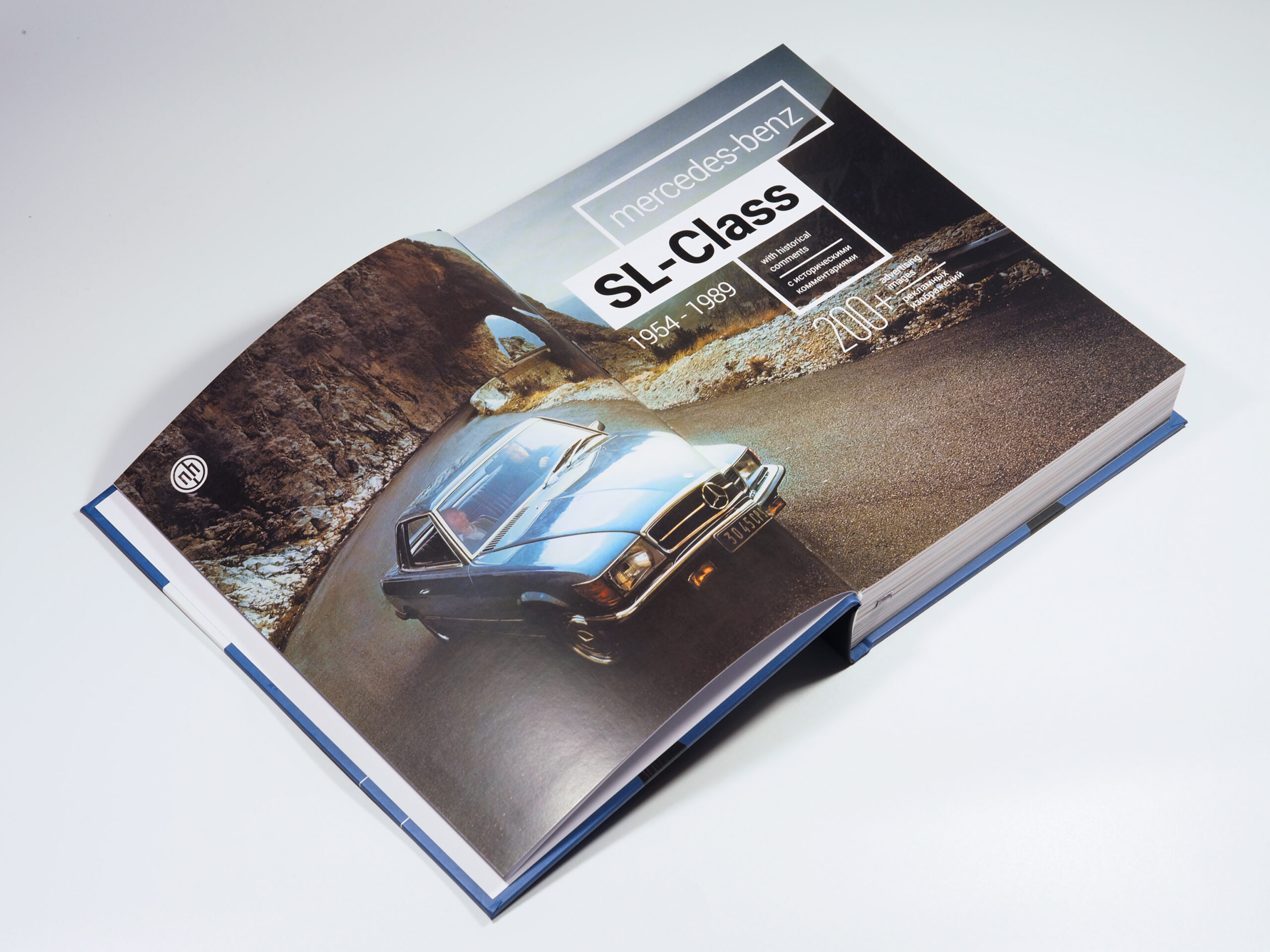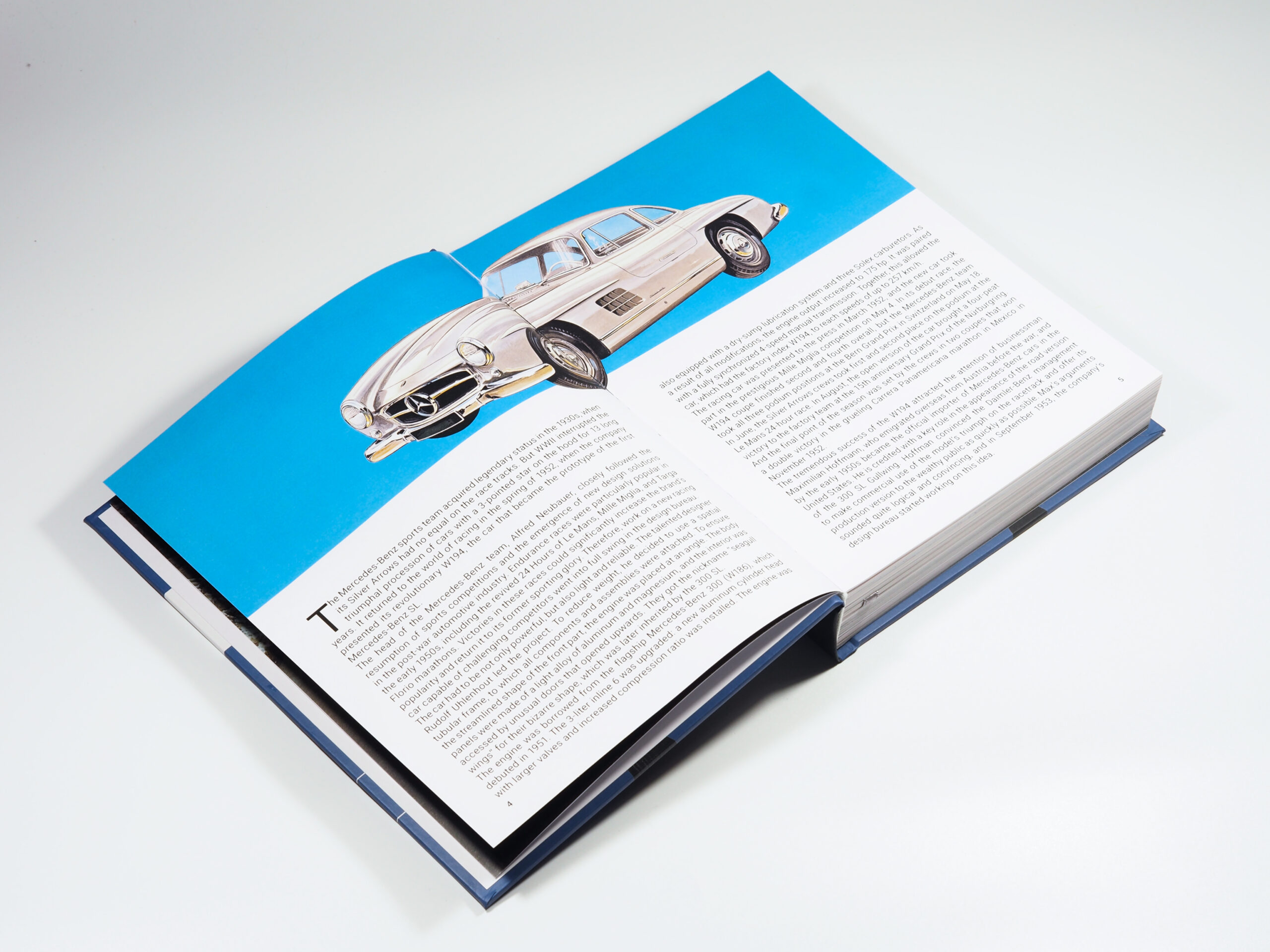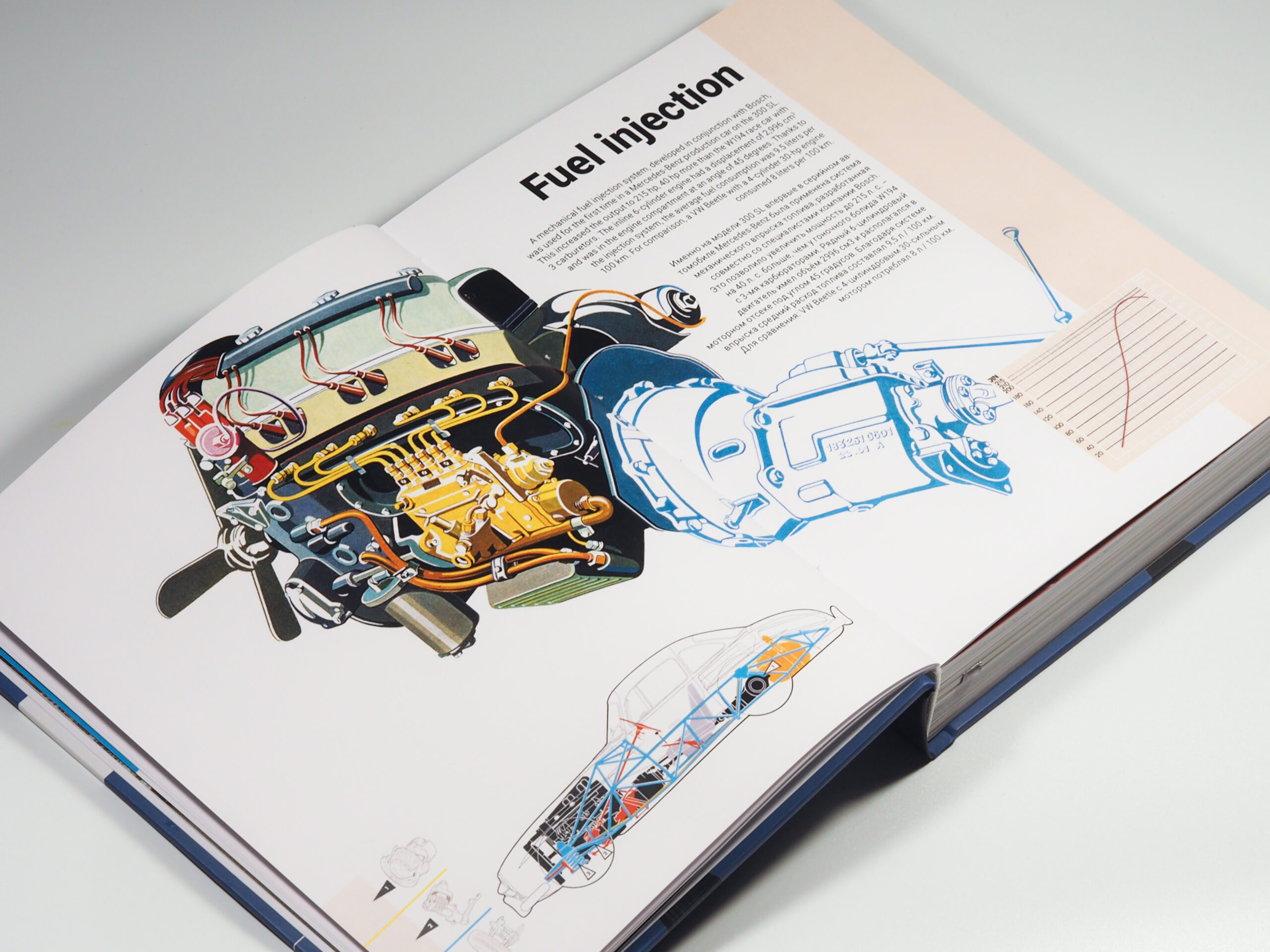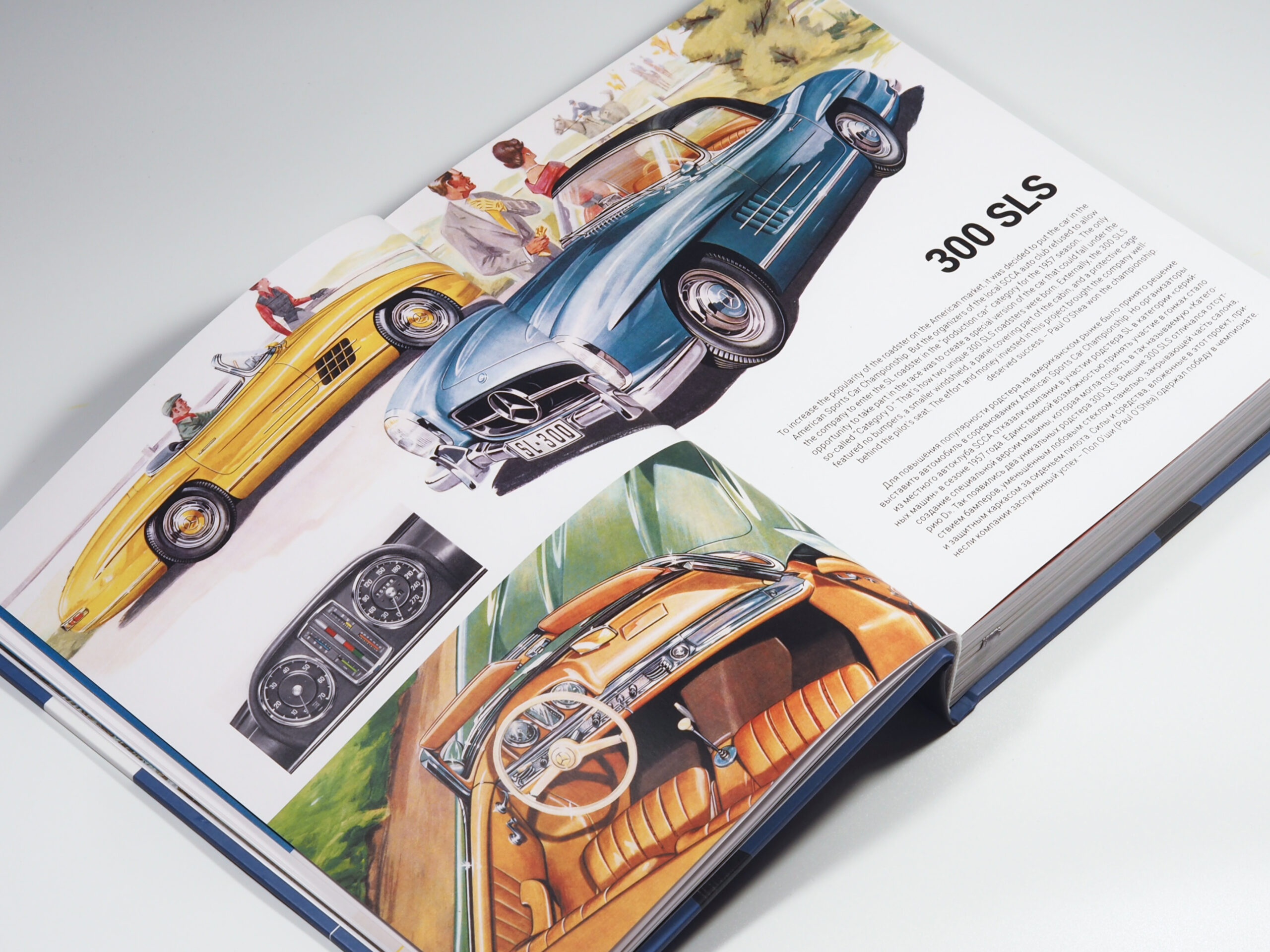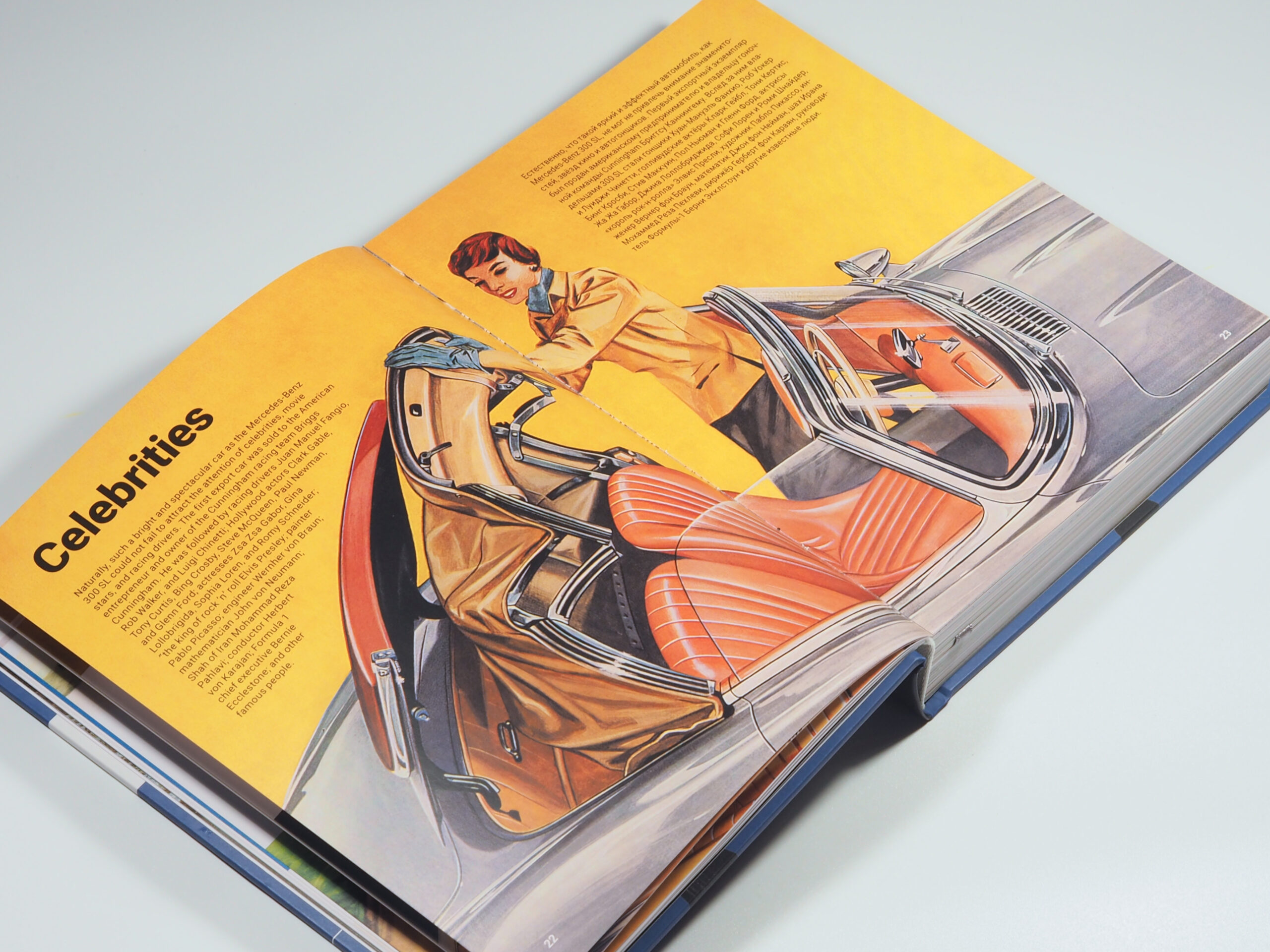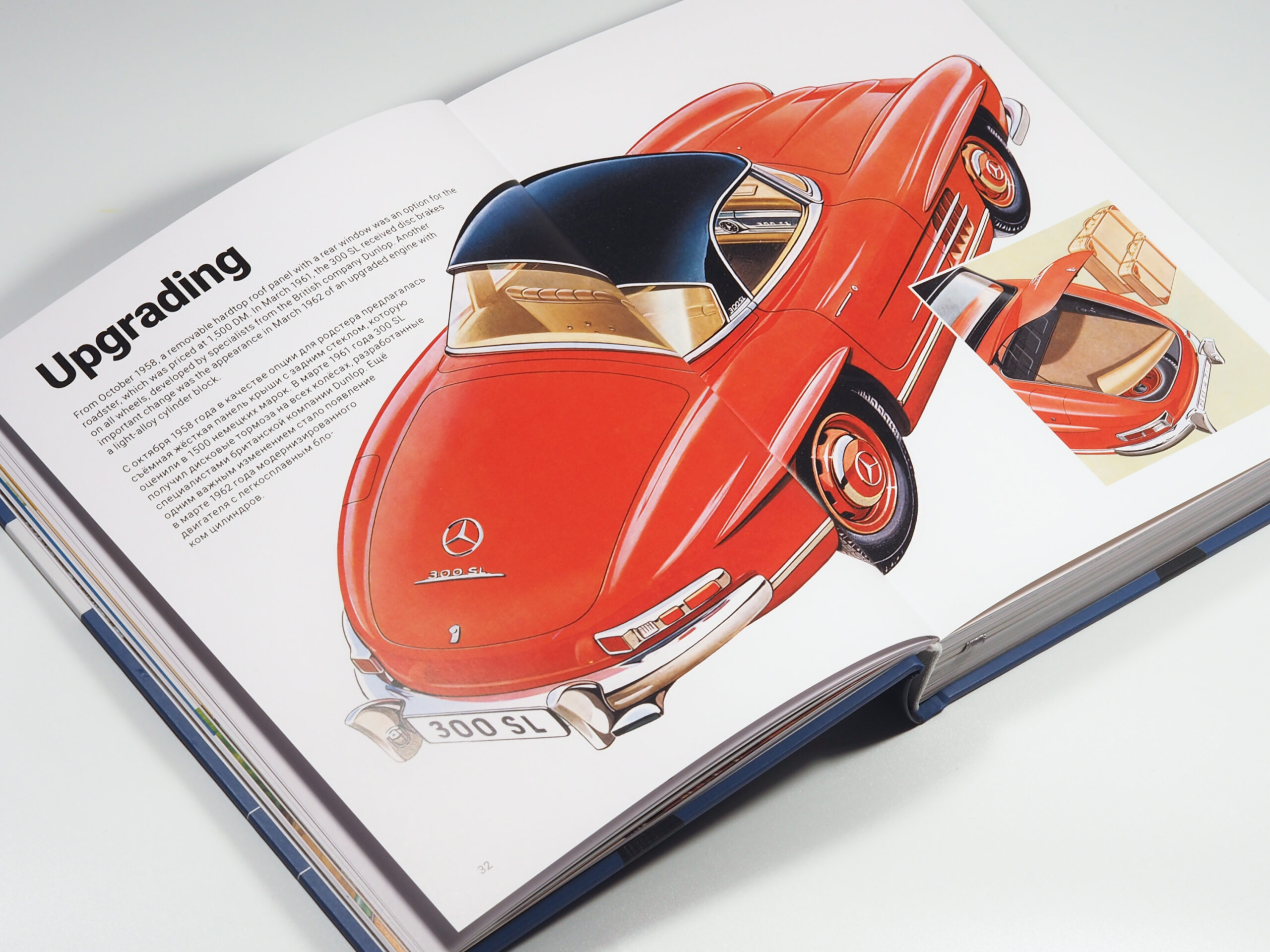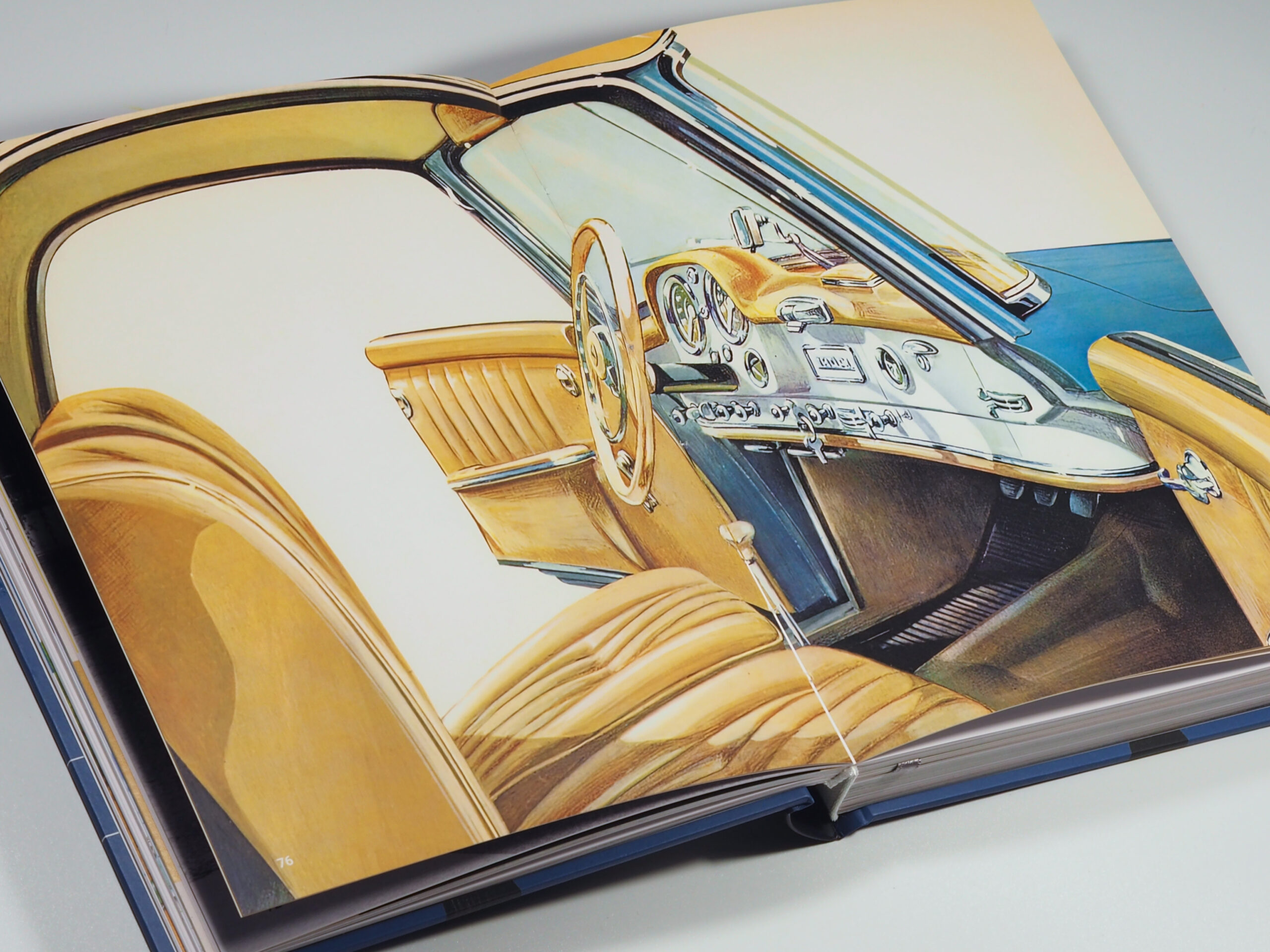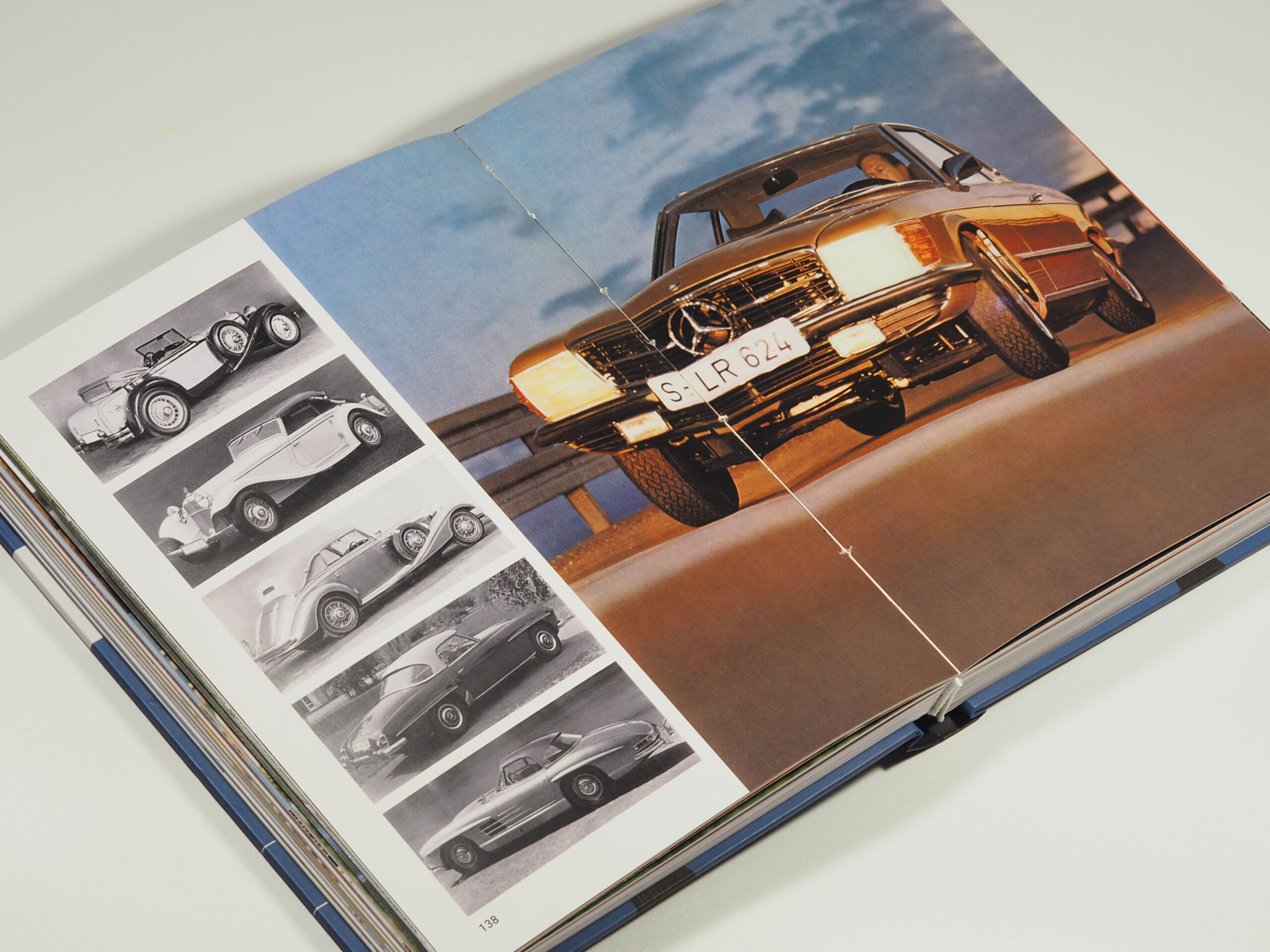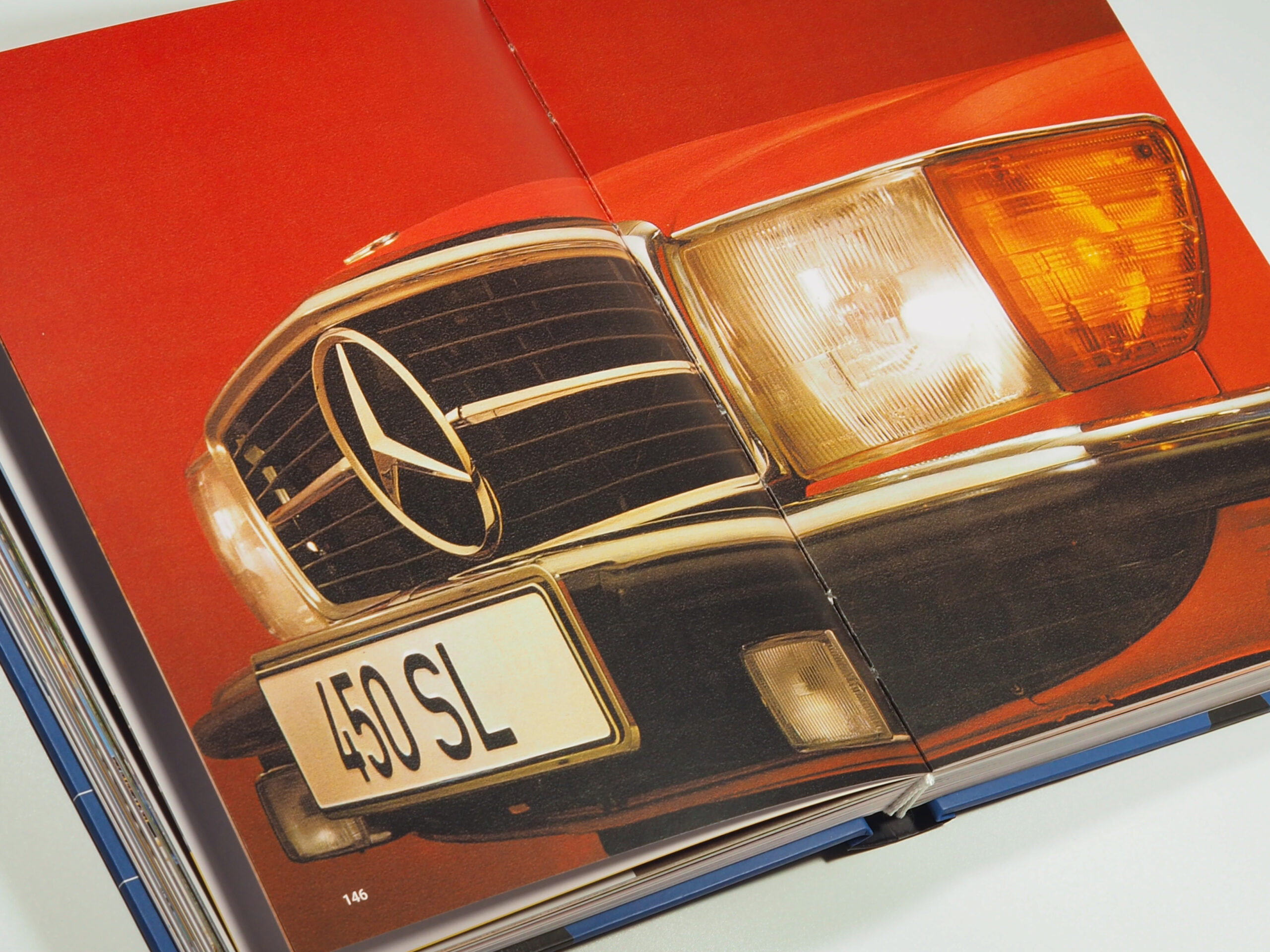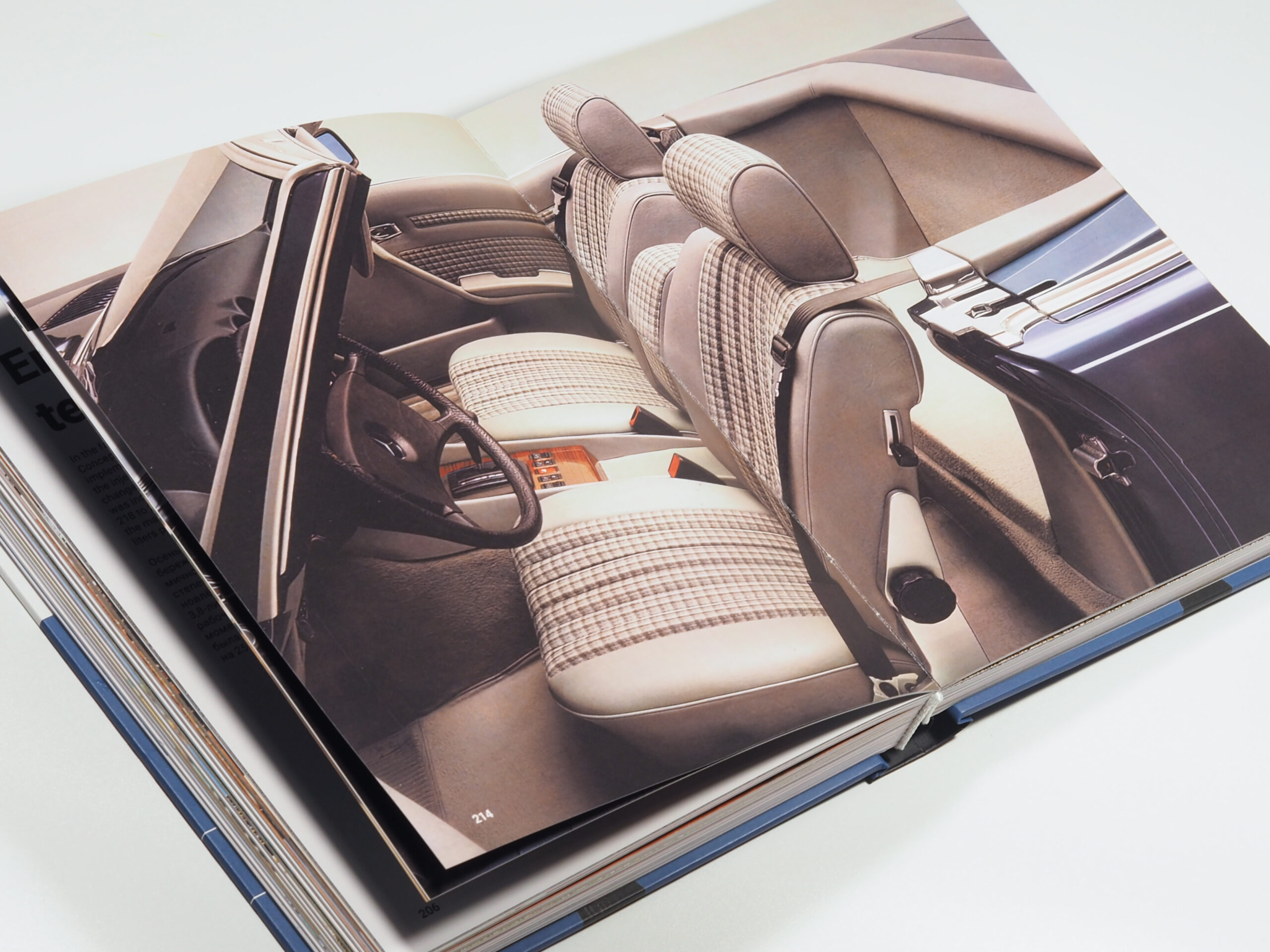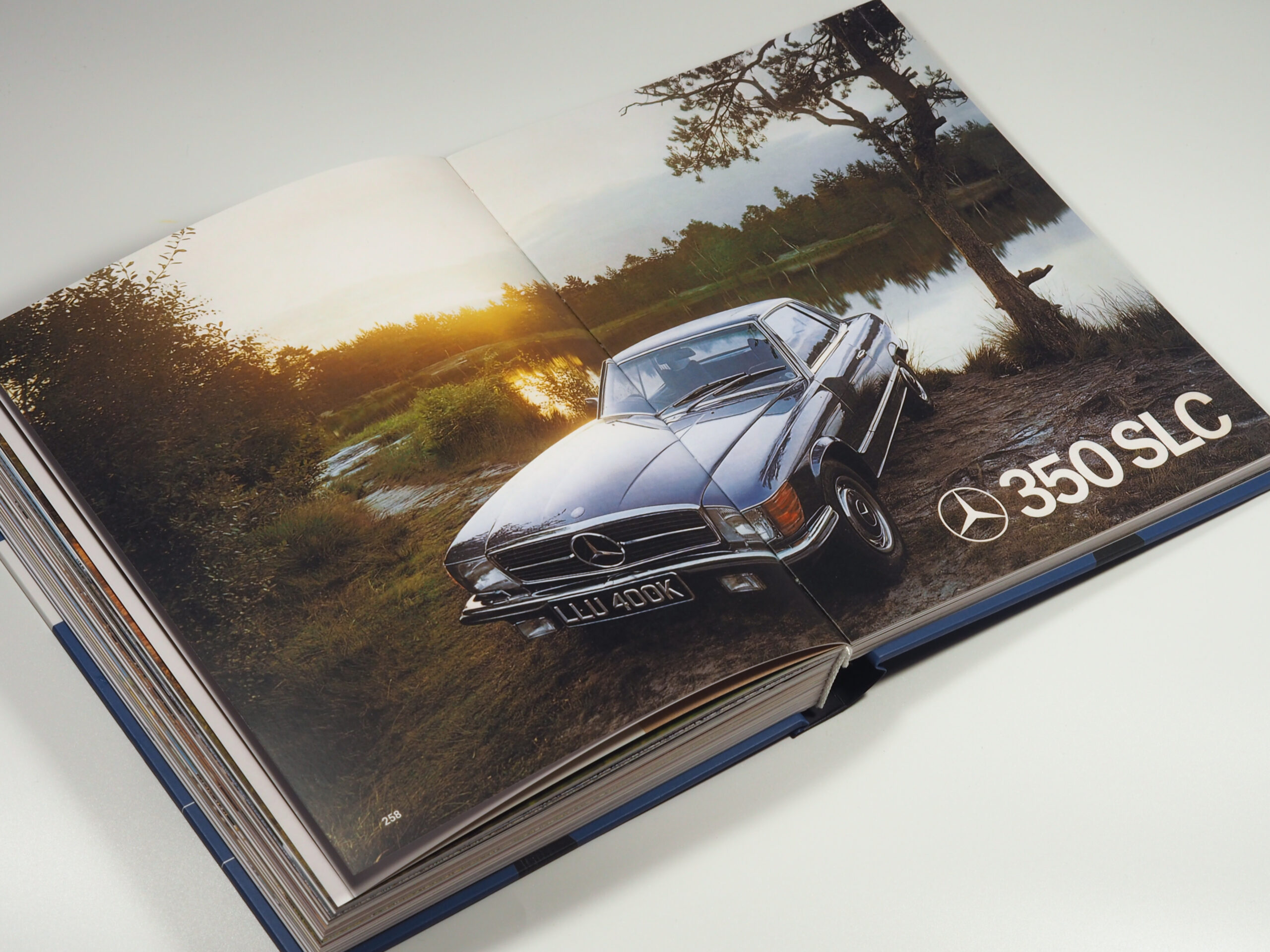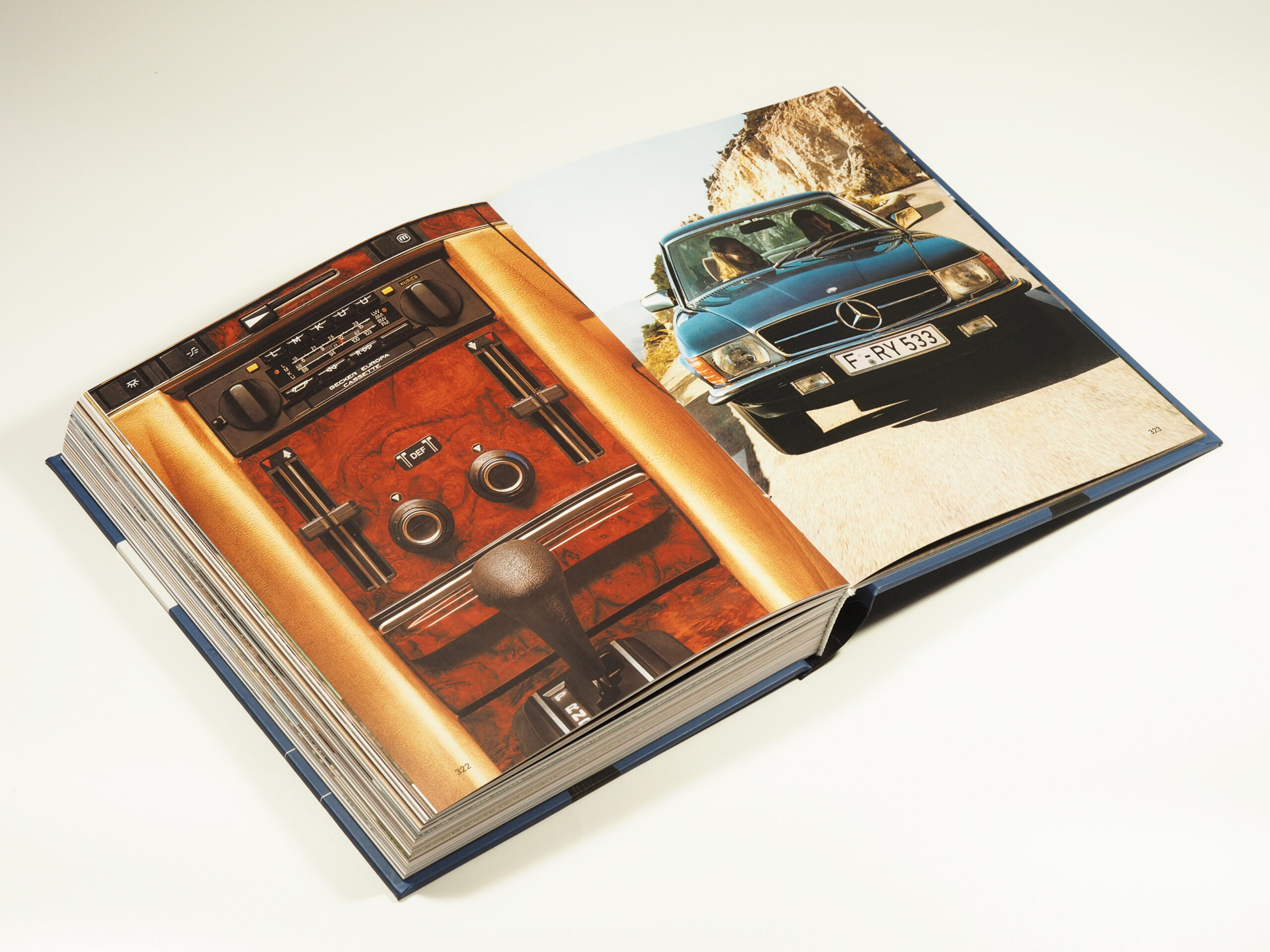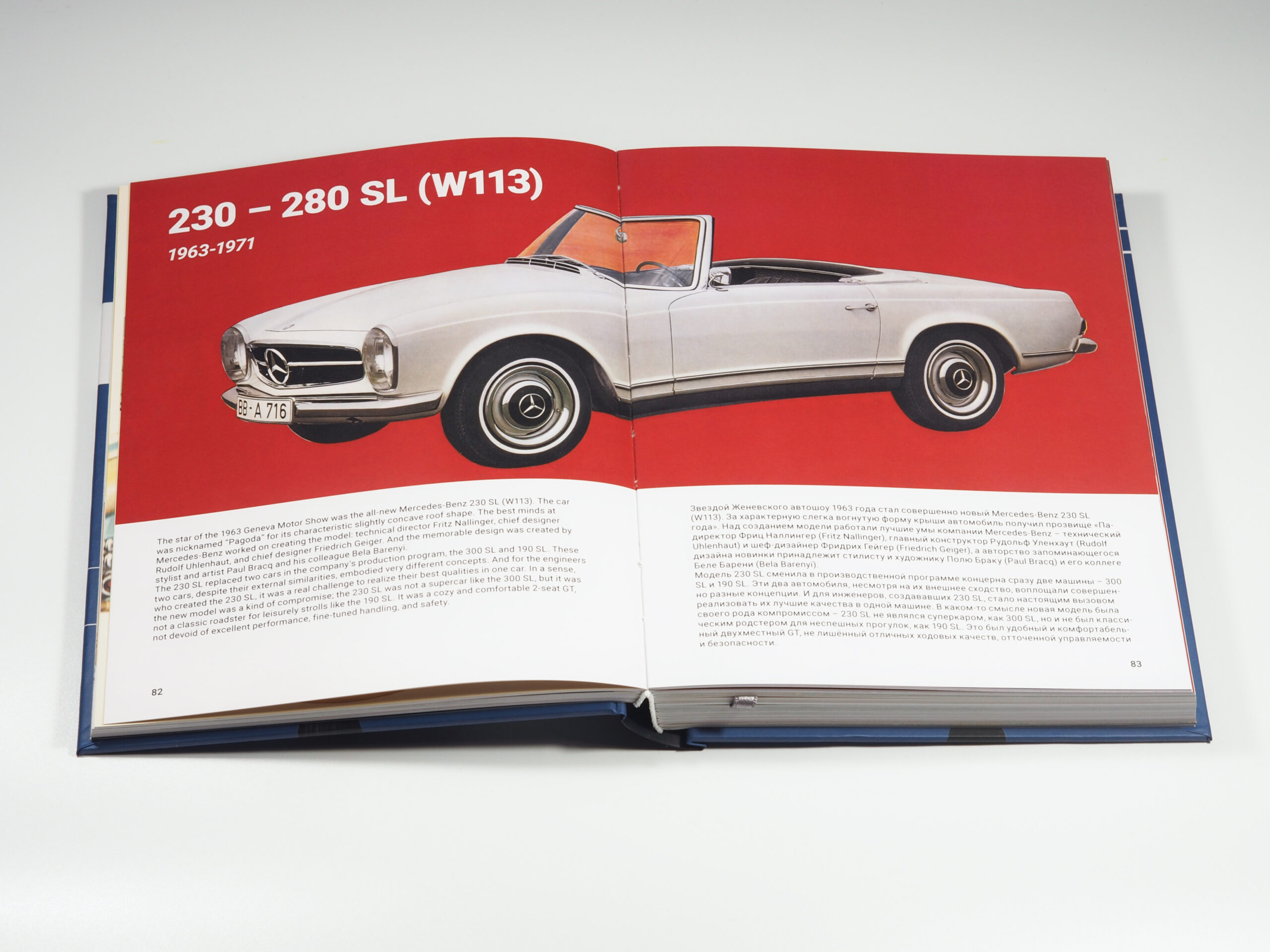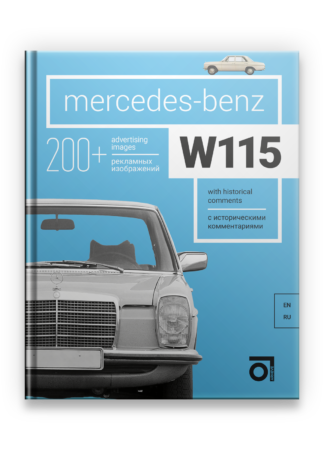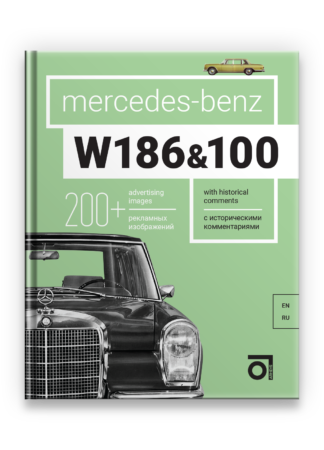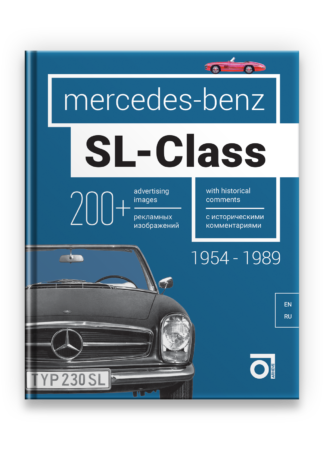Description
Mercedes-Benz SL-Class Hardcover book (fragment of the text)
The Mercedes-Benz sports team acquired legendary status in the 1930s, when its Silver Arrows had no equal on the race tracks. But WWII interrupted the triumphal procession of cars with a 3-pointed star on the hood for 13 long years. It returned to the world of racing in the spring of 1952, when the company presented its revolutionary W194, the car that became the prototype of the first Mercedes-Benz SL.
The head of the Mercedes-Benz team, Alfred Neubauer, closely followed the resumption of sports competitions and the emergence of new design solutions in the post-war automotive industry. Endurance races were particularly popular in the early 1950s, including the revived 24 Hours of Le Mans, Mille Miglia, and Targa Florio marathons.
Victories in these races could significantly increase the brand’s popularity and return it to its former sporting glory. Therefore, work on a new racing car capable of challenging competitors went into full swing in the design bureau. The car had to be not only powerful, but also light and reliable. The talented designer Rudolf Uhlenhout led the project.
To reduce weight, he decided to use a spatial tubular frame, to which all components and assemblies were attached. To ensure the streamlined shape of the front part, the engine was placed at an angle. The body panels were made of a light alloy of aluminum and magnesium, and the interior was accessed by unusual doors that opened upwards.
They got the nickname “seagull wings” for their bizarre shape, which was later inherited by the 300 SL. The engine was borrowed from the flagship Mercedes-Benz 300 (W186), which debuted in 1951. The 3-liter inline 6 was upgraded: a new aluminum cylinder head with larger valves and increased compression ratio was installed. The engine was also equipped with a dry-sump lubrication system and three Solex carburetors.
As a result of all modifications, the engine output increased to 175 hp. It was paired with a fully synchronized 4-speed manual transmission. Together, this allowed the car, which had the factory index W194, to reach speeds of up to 257 km/h. The racing car was presented to the press in March 1952, and the new car took part in the prestigious Mille Miglia competition on May 4.
In its debut race, the W194 coupe finished second and fourth overall, but the Mercedes-Benz team took all three podium positions at the Bern Grand Prix in Switzerland on May 18. In June, the Silver Arrows crews took first and second place on the podium at the Le Mans 24-hour race.
In August, the open version of the car brought a four-peat victory to the factory team at the 15th anniversary Grand Prix of the Nürburgring. And the final point of the season was set by the crews in two coupes that won a double victory in the grueling Carrera Panamericana marathon in Mexico in November 1952.
The tremendous success of the W194 attracted the attention of businessman Maximilian Hoffmann, who emigrated overseas from Austria before the war, and by the early 1950s became the official importer of Mercedes-Benz cars in the United States. He is credited with a key role in the appearance of the road version of the 300 SL Gullwing.
Hoffman convinced the Daimler-Benz management to make commercial use of the model’s triumph on the racetrack and offer its production version to the wealthy public as quickly as possible. Max’s arguments sounded quite logical and convincing, and in September 1953, the company’s design bureau started working on this idea.
Read the continuation of Mercedes-Benz SL-Class story in the book.
Other books about history of Mercedes:
